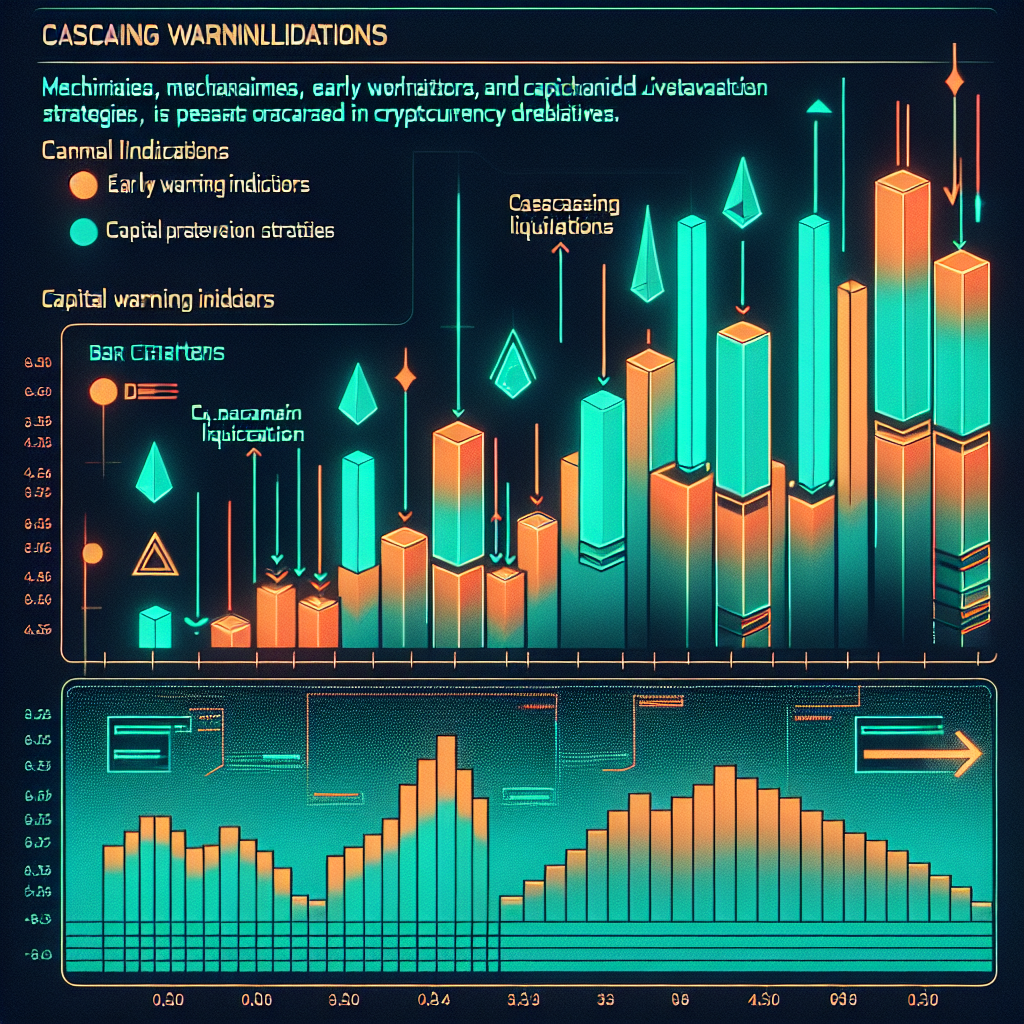Cascading Liquidations in Cryptocurrency Derivatives: Mechanisms, Early Warning Indicators, and Capital Preservation Strategies

Introduction
Cascading liquidations are among the most dramatic events in cryptocurrency derivatives markets. Within minutes, billions of dollars in open interest can vanish as leveraged positions are force-closed, sending shock waves through Bitcoin, Ether, and altcoin futures. For traders, understanding why these chain reactions happen, how to spot them in advance, and what strategies reduce vulnerability is essential for long-term profitability and capital preservation.
What Are Cascading Liquidations?
A liquidation occurs when a trader’s margin balance falls below the maintenance requirement, prompting the exchange to close the position to prevent further loss. Cascading liquidations describe a self-reinforcing sequence in which one forced closure pushes price lower, triggering additional liquidations for other traders, and so on. This cycle accelerates volatility, deepens drawdowns, and can temporarily distort fair value across multiple derivatives pairs.
How Margin Calls Trigger Liquidations
Crypto derivatives exchanges run real-time risk checks. When a position’s unrealized loss erodes collateral below the maintenance margin, the risk engine issues a margin call. If additional margin is not added within seconds, the exchange liquidates automatically at the best available bids or offers. Because high leverage magnifies P&L, small price moves can wipe out margin and start the cascade.
The Role of Auto-Deleveraging (ADL)
On some venues, if the insurance fund cannot absorb losses from bankrupt accounts, the exchange employs auto-deleveraging. ADL forcibly reduces positions from traders on the winning side, prioritizing those with the largest profits and highest leverage. While ADL limits systemic loss, it also adds fuel to price swings by pulling liquidity when it is needed most.
Mechanisms Behind Cascading Liquidations
Mark Price vs. Last Price
Certain exchanges calculate liquidation thresholds using a “mark price” derived from a basket of spot markets and funding data. When spot exchanges move rapidly, the mark price can gap, abruptly repositioning liquidation bands. Simultaneous liquidations across many contracts increase order-book pressure and propagate volatility to related assets.
Liquidity Gaps and Slippage
Crypto order books are often thin compared with traditional markets. When large liquidation orders hit, available bids vanish, producing significant slippage. Each forced sell order clears multiple levels of the book, pushing the mark price lower and pulling more traders into danger. In low-liquidity altcoin perpetuals, price drops of 20–40 % within minutes are not uncommon during severe cascades.
Cross vs. Isolated Margin
In cross-margin mode, collateral is shared among all positions. A sharp move in one pair can drain margin from otherwise healthy positions in other pairs, pulling them into liquidation territory. This interconnection increases the probability of multi-asset cascades, especially when the broader crypto market is moving in the same direction.
Early Warning Indicators Traders Should Monitor
Funding Rate Spikes
Funding rates align perpetual swap prices with the underlying spot market. Extreme positive funding implies aggressive long positioning, while extreme negative funding reflects crowded shorts. When funding stays elevated for several hours, traders should brace for a squeeze or cascade in the opposite direction as over-leveraged positions become vulnerable.
Open Interest and Long/Short Ratio
Rising open interest accompanied by one-sided positioning is a red flag. A sudden decrease in open interest, especially alongside a sharp price move, often signals the start of mass liquidations. Monitoring aggregated open-interest charts and commitment-of-traders style metrics helps traders anticipate disorderly unwinds.
Bid–Ask Spread Widening
Before a cascade, market-makers widen spreads to manage risk, reducing displayed depth. Widening spreads make it harder for margin-challenged traders to exit gracefully, increasing the odds of forced liquidations. Watching real-time Level-2 data for sudden depth deterioration offers valuable seconds of lead time.
Exchange Insurance Fund Depletion
Many exchanges publish the size of their insurance fund. Rapid drawdowns in the fund suggest that liquidations are failing to close positions above bankruptcy price. An empty or shrinking fund raises the probability that ADL will activate, intensifying volatility for everyone.
Capital Preservation Strategies
Position Sizing and Leverage Discipline
The simplest defense is conservative leverage. Keeping effective leverage below 3× for volatile assets reduces the chance that a routine 5 % market move results in liquidation. Position sizing rules, such as risking no more than 1 % of account equity per trade, further insulate the portfolio from tail-risk events.
Dynamic Hedging With Options and Spot
Buying protective puts or maintaining an offsetting spot position cushions downside during a futures cascade. Delta-hedging with options can lock in profits while capping losses. Although hedging has a cost, it acts like insurance when liquidity evaporates.
Using Stop-Loss and Take-Profit Orders Wisely
A well-placed stop-loss gets a trader out before the liquidation engine does. Trailing stops that adjust with favorable price action can preserve gains while limiting downside. However, stops should be placed at technical levels with sufficient liquidity to avoid unnecessary slippage.
Diversifying Across Platforms and Assets
No single exchange offers perfect uptime or risk management. Splitting capital across multiple reputable venues and allocating exposure to both high-cap and low-correlation assets reduces systemic risk. In the event one platform experiences cascading liquidations, the impact on total portfolio value is contained.
Conclusion
Cascading liquidations in cryptocurrency derivatives are a product of high leverage, thin liquidity, and automated risk controls. While they cannot be eliminated, informed traders can mitigate their impact. By monitoring funding rates, open interest, and liquidity metrics, and by enforcing disciplined leverage and robust hedging practices, market participants can protect capital and even find opportunity amid the storm. Mastering these techniques converts chaos into calculated risk, the hallmark of sustainable success in the crypto derivatives arena.